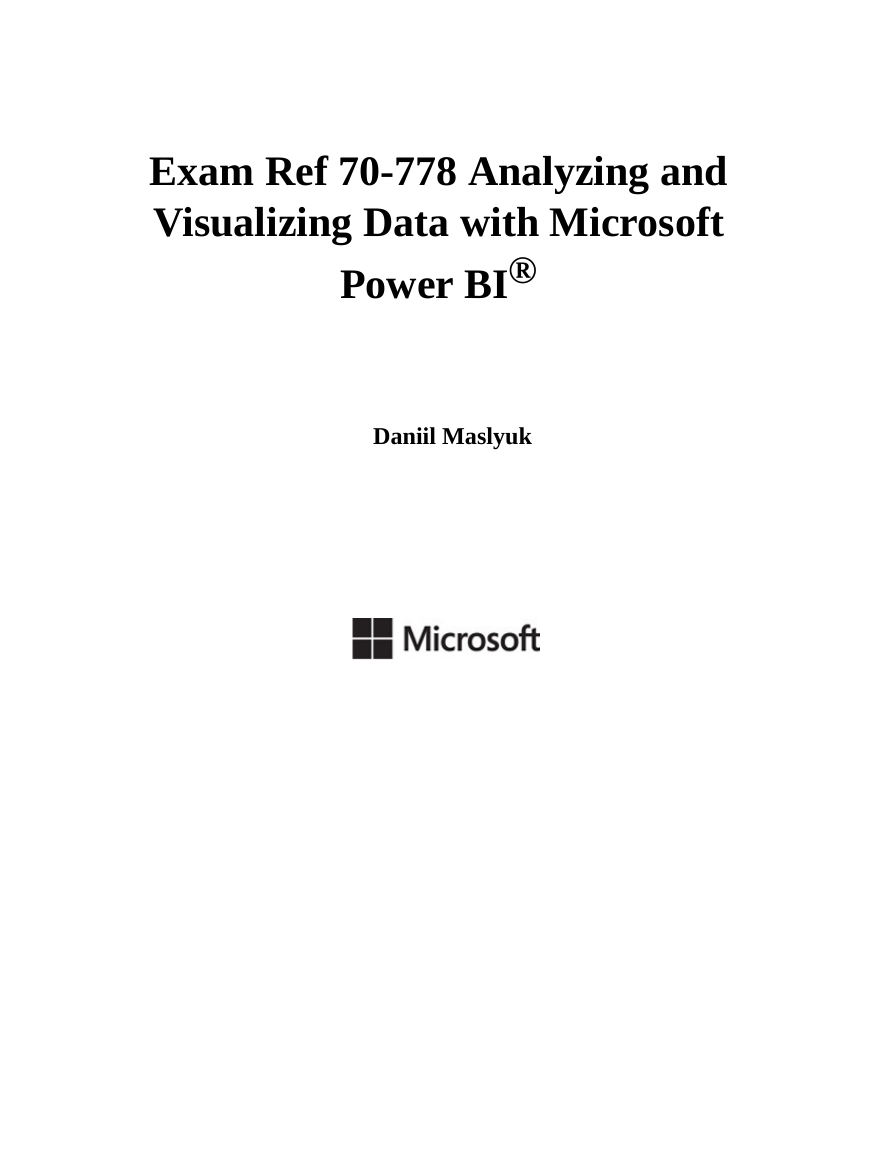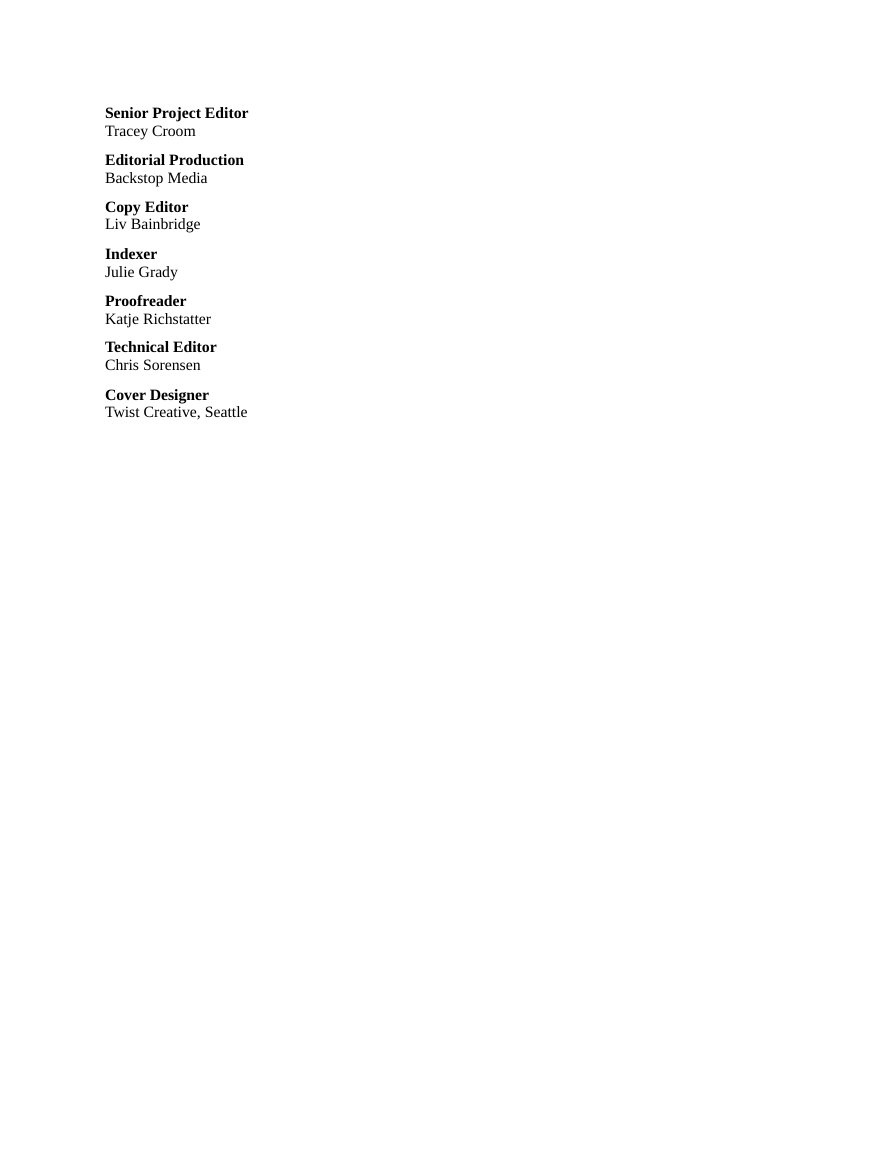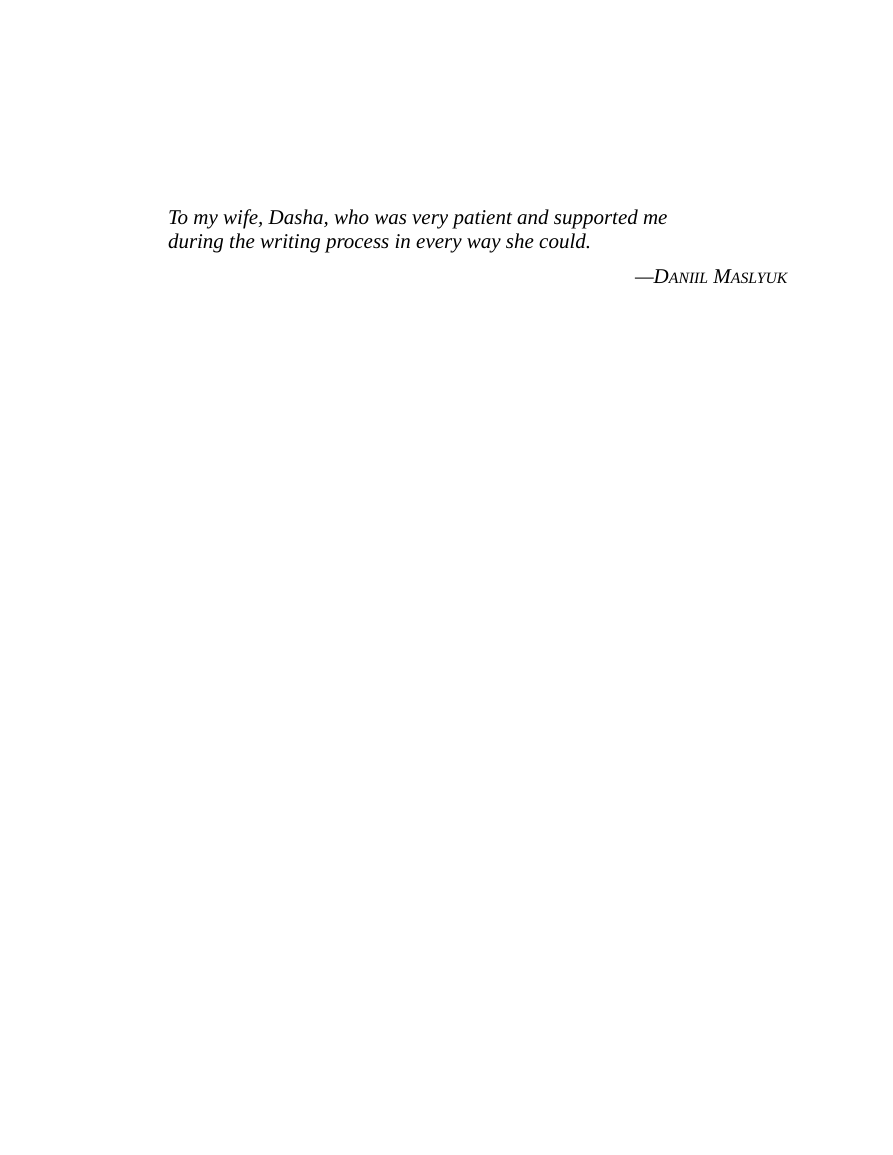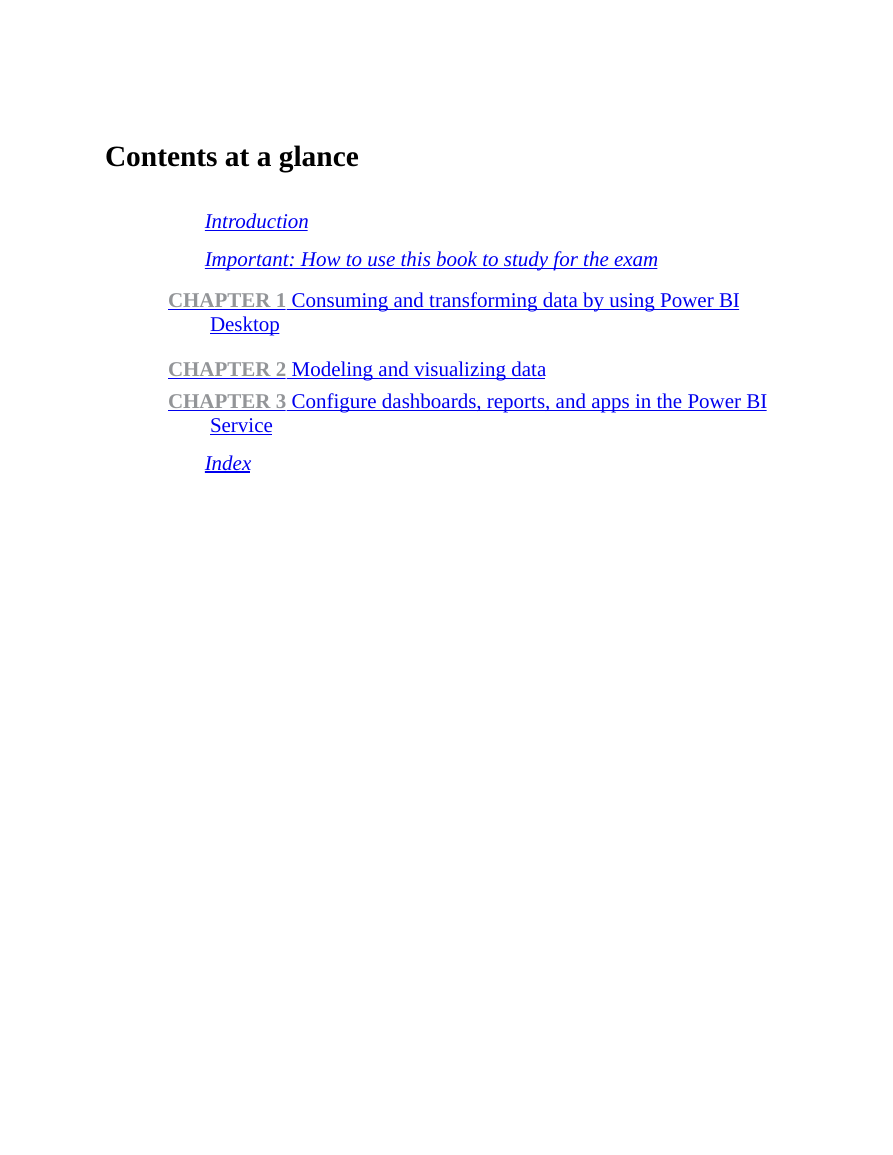Title Page
Copyright Page
Dedication Page
Contents at a Glance
Contents
Acknowledgements
About the author
Introduction
Organization of this book
Microsoft certifications
Microsoft Virtual Academy
Quick access to online references
Errata, updates, & book support
Stay in touch
Important: How to use this book to study for the exam
Chapter 1 Consuming and transforming data by using Power BI Desktop
Skill 1.1: Connect to data sources
Connect to databases, files, and folders
Data connectivity modes
Importing data
DirectQuery
Implications of using DirectQuery
When to use DirectQuery
Live Connection
Connecting to Microsoft SQL Server
Connecting to Access database
Connecting to an Oracle database
Connecting to a MySQL database
Connecting to PostgreSQL database
Connecting to data using generic interfaces
Connecting to Text/CSV files
Connecting to JSON files
Connecting to XML files
Connecting to a Folder
Connecting to a SharePoint folder
Connecting to web pages and files
Connecting to Azure Data Lake Store and Azure Blob Storage
Import from Excel
Import data from Excel
Import Excel workbook contents
Connect to SQL Azure, Big Data, SQL Server Analysis Services (SSAS)
Connecting to Azure SQL Database and Azure SQL Data Warehouse
Connecting to Azure HDInsight Spark
Connecting to SQL Server Analysis Services (SSAS)
Connecting to Power BI service
Skill 1.2: Perform transformations
Design and implement basic and advanced transformations
Power Query overview
Using the Power Query Editor interface
Basic transformations
Advanced transformations
Appending queries
Merging queries
Creating new columns in tables
Apply business rules
Change data format to support visualization
Skill 1.3: Cleanse data
Manage incomplete data
Meet data quality requirements
Thought experiment
Thought experiment answers
Chapter summary
Chapter 2 Modeling and visualizing data
Skill 2.1: Create and optimize data models
Manage relationships
Optimize models for reporting
Manually type in data
Use Power Query
Skill 2.2: Create calculated columns, calculated tables, and measures
Create DAX formulas for calculated columns
Calculated tables
Measures
Use What-if parameters
Skill 2.3: Measure performance by using KPIs, gauges, and cards
Calculate the actual
Calculate the target
Calculate actual to target
Configure values for gauges
Use the format settings to manually set values
Skill 2.4: Create hierarchies
Create date hierarchies
Create hierarchies based on business needs
Add columns to tables to support desired hierarchy
Skill 2.5: Create and format interactive visualizations
Select a visualization type
Configure page layout and formatting
Configure interactions between visuals
Configure duplicate pages
Handle categories that have no data
Configure default summarization and data category of columns
Position, align, and sort visuals
Enable and integrate R visuals
Format measures
Use bookmarks and themes for reports
Skill 2.6: Manage custom reporting solutions
Configure and access Microsoft Power BI Embedded
Enable developers to create and edit reports through custom applications
Enable developers to embed reports in applications
Use the Power BI API to push data into a Power BI dataset
Enable developers to create custom visuals
Thought experiment
Thought experiment answers
Chapter summary
Chapter 3 Configure dashboards, reports, and apps in the Power BI Service
Skill 3.1: Access on-premises data
Connect to a data source by using a data gateway
Publish reports to the Power BI service from Power BI Desktop
Edit Power BI service reports by using Power BI Desktop
Skill 3.2: Configure a dashboard
Add text and images
Filter dashboards
Dashboard settings
Customize the URL and title
Enable natural language queries
Skill 3.3: Publish and embed reports
Publish to web
Publish to Microsoft SharePoint
Publish reports to a Power BI Report Server
Skill 3.4: Configure security for dashboards, reports, and apps
Create a security group by using the Admin Portal
Configure access to dashboards and app workspaces
Configure the export and sharing setting of the tenant
Configure row-level security
Skill 3.5: Configure apps and apps workspaces
Create and configure an app workspace
Publish an app
Thought experiment
Thought experiment answers
Chapter summary
Index
Code Snippets
















 2023年江西萍乡中考道德与法治真题及答案.doc
2023年江西萍乡中考道德与法治真题及答案.doc 2012年重庆南川中考生物真题及答案.doc
2012年重庆南川中考生物真题及答案.doc 2013年江西师范大学地理学综合及文艺理论基础考研真题.doc
2013年江西师范大学地理学综合及文艺理论基础考研真题.doc 2020年四川甘孜小升初语文真题及答案I卷.doc
2020年四川甘孜小升初语文真题及答案I卷.doc 2020年注册岩土工程师专业基础考试真题及答案.doc
2020年注册岩土工程师专业基础考试真题及答案.doc 2023-2024学年福建省厦门市九年级上学期数学月考试题及答案.doc
2023-2024学年福建省厦门市九年级上学期数学月考试题及答案.doc 2021-2022学年辽宁省沈阳市大东区九年级上学期语文期末试题及答案.doc
2021-2022学年辽宁省沈阳市大东区九年级上学期语文期末试题及答案.doc 2022-2023学年北京东城区初三第一学期物理期末试卷及答案.doc
2022-2023学年北京东城区初三第一学期物理期末试卷及答案.doc 2018上半年江西教师资格初中地理学科知识与教学能力真题及答案.doc
2018上半年江西教师资格初中地理学科知识与教学能力真题及答案.doc 2012年河北国家公务员申论考试真题及答案-省级.doc
2012年河北国家公务员申论考试真题及答案-省级.doc 2020-2021学年江苏省扬州市江都区邵樊片九年级上学期数学第一次质量检测试题及答案.doc
2020-2021学年江苏省扬州市江都区邵樊片九年级上学期数学第一次质量检测试题及答案.doc 2022下半年黑龙江教师资格证中学综合素质真题及答案.doc
2022下半年黑龙江教师资格证中学综合素质真题及答案.doc